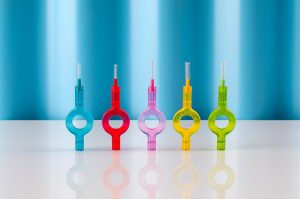Overcoming barriers to better at-home oral hygiene routines
Featured Products Promotional FeaturesPosted by: Dental Design 27th September 2023

One of the biggest challenges for dental teams is getting patients to maintain an effective daily dental hygiene routine. Optimised homecare is a crucial line of defence in the prevention of oral disease. But getting people to start, then stick to, a new regime can be hard.
Without engagement, and the opportunity to build relationships, keeping patients motivated may seem a near-impossible task. We know that, for those who rely on NHS dentistry around the UK, access to regular dental examinations and consultations is almost non-existent.[1] In April, NHS charges in England increased by 8.5%, a hike that would have done nothing to help those struggling to get the care they need.
Today, everything is more expensive than it was a few years ago and this has pushed anything perceived as non-essential – including non-emergency dentistry – down many people’s list of financial priorities. But preventive appointments are high-value and crucial for talking with patients about things like correct brushing and the best products to use. They just need to recognise the importance of this on-going care.
Good patient conversations lead to positive engagement and trust. They help you understand what’s holding them back, whether it’s worries about affording treatment or something else, and they can appreciate that they are in control of their oral health. Ultimately, you want to empower people, by showing them how to have a really clean and healthy mouth, so they need to see you less. This can make it easier to encourage them to try something new.
 Good brushing technique is crucial, of course, and the first building block of a daily routine. But for optimal plaque removal, which will significantly lower their risk of disease, interdental cleaning should be performed once a day using a quality tool to make the job easy. Interdental brushes are now a well-established alternative to string floss, which patients often found fiddly.
Good brushing technique is crucial, of course, and the first building block of a daily routine. But for optimal plaque removal, which will significantly lower their risk of disease, interdental cleaning should be performed once a day using a quality tool to make the job easy. Interdental brushes are now a well-established alternative to string floss, which patients often found fiddly.
You will already be telling patients about how billions of bacteria lurking in interdental spaces, even for orally-healthy adults.[2] You’ll be describing how this bacteria can accumulate if left undisturbed, increasing the risk of caries and halitosis, as well as promoting the development of tooth loss and serious non-oral diseases or systemic health concerns.[3] So, why is it still so difficult to get patients to clean interdentally?
There is plenty of research out there about the psychology of routines. Lots of ‘new’, positive routines come without instant gratification. When patients elevate their oral care routine with interdental cleaning, the long-term benefits may seem intangible – it is a preventive routine, after all. Ensure you have interdental brushes to hand, to demonstrate how practical they are to hold, and move in and out of spaces with ease. A big misconception about these tools is that they are one-size-fits-all. This is untrue, as high-quality ranges offer different sizes so dentists and DCPs can help each patient choose the appropriate size for them. Sizing therefore becomes key to how willing patients may be to clean interdentally every day. Held at the correct angle, the right-size brush will reduce risk of harm or injury; comfort is maintained too. Give them an interdental brush to try during a routine examination or consultation and they will also discover how they ‘fan out’ to fill the space, unlike string floss. Bacteria and hidden food deposits are swept away, gently and effectively.
 Eco-conscious patients may question being recommended a plastic product and leading oral health brands have recognised this. Curaprox, for example, has created an interdental tool where only the brush tip will need replacing, meaning less avoidable waste. Its CPS Prime interdental brush has a unique click handle system, placing the brush head into a reusable angulated holder that helps with positioning while minimising plastic waste. A durable, robust and long-lasting tool, it’s a cost-effective choice too. The brush has fine, long and resilient bristles, with different sizes available each colour-coded for convenience. To help you teach an optimised interdental routine, a chairside box is available, containing a probe to measure spaces, charts to record and share the measurements with patients, plus a selection of samples.
Eco-conscious patients may question being recommended a plastic product and leading oral health brands have recognised this. Curaprox, for example, has created an interdental tool where only the brush tip will need replacing, meaning less avoidable waste. Its CPS Prime interdental brush has a unique click handle system, placing the brush head into a reusable angulated holder that helps with positioning while minimising plastic waste. A durable, robust and long-lasting tool, it’s a cost-effective choice too. The brush has fine, long and resilient bristles, with different sizes available each colour-coded for convenience. To help you teach an optimised interdental routine, a chairside box is available, containing a probe to measure spaces, charts to record and share the measurements with patients, plus a selection of samples.
To motivate patients in improving their at-home oral care practises, engagement is crucial. The simple message is that an elevated regime won’t take long, or cost the earth. Teach them how to protect their health, and reduce their risk of disease. Quality products, along with the right technique are key and a demonstration of interdental brushes should be part of routine consultations.

For more information, please visit
[1] One in ten Britons have performed dentistry on themselves, half in the last two years. YouGov, 22 March 2023. Link: https://yougov.co.uk/topics/politics/articles-reports/2023/03/22/one-ten-britons-have-performed-dentistry-themselve (accessed June 2023).
[2] Bourgeois, D., Bravo, M., Llodra, JC. et al. Calibrated interdental brushing for the prevention of periodontal pathogens infection in young adults – a randomized controlled clinical trial. Sci Rep 9, 15127 (2019). https://doi.org/10.1038/s41598-019-51938-8
[3] Sci Rep 9, 15127 (2019).








